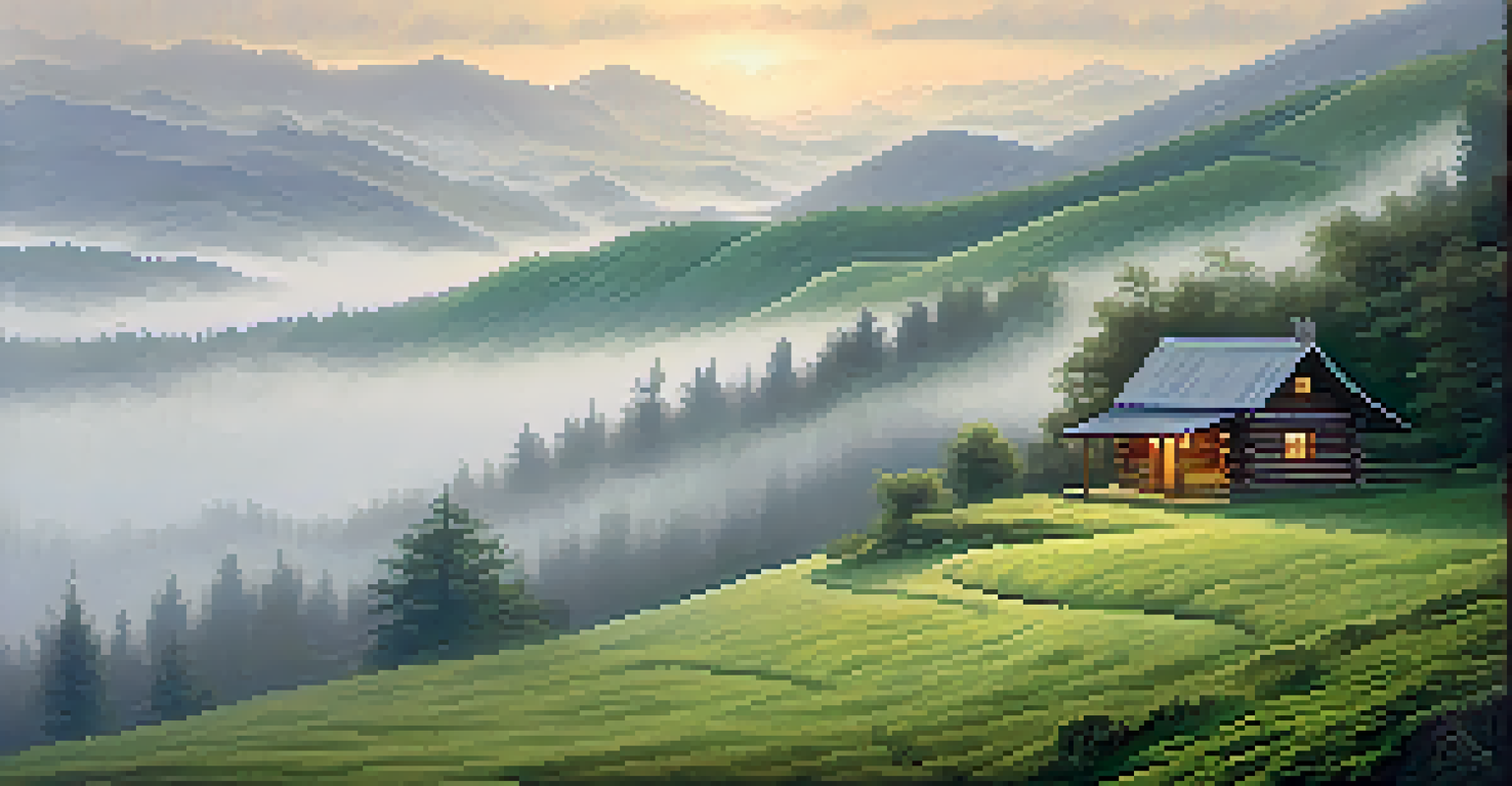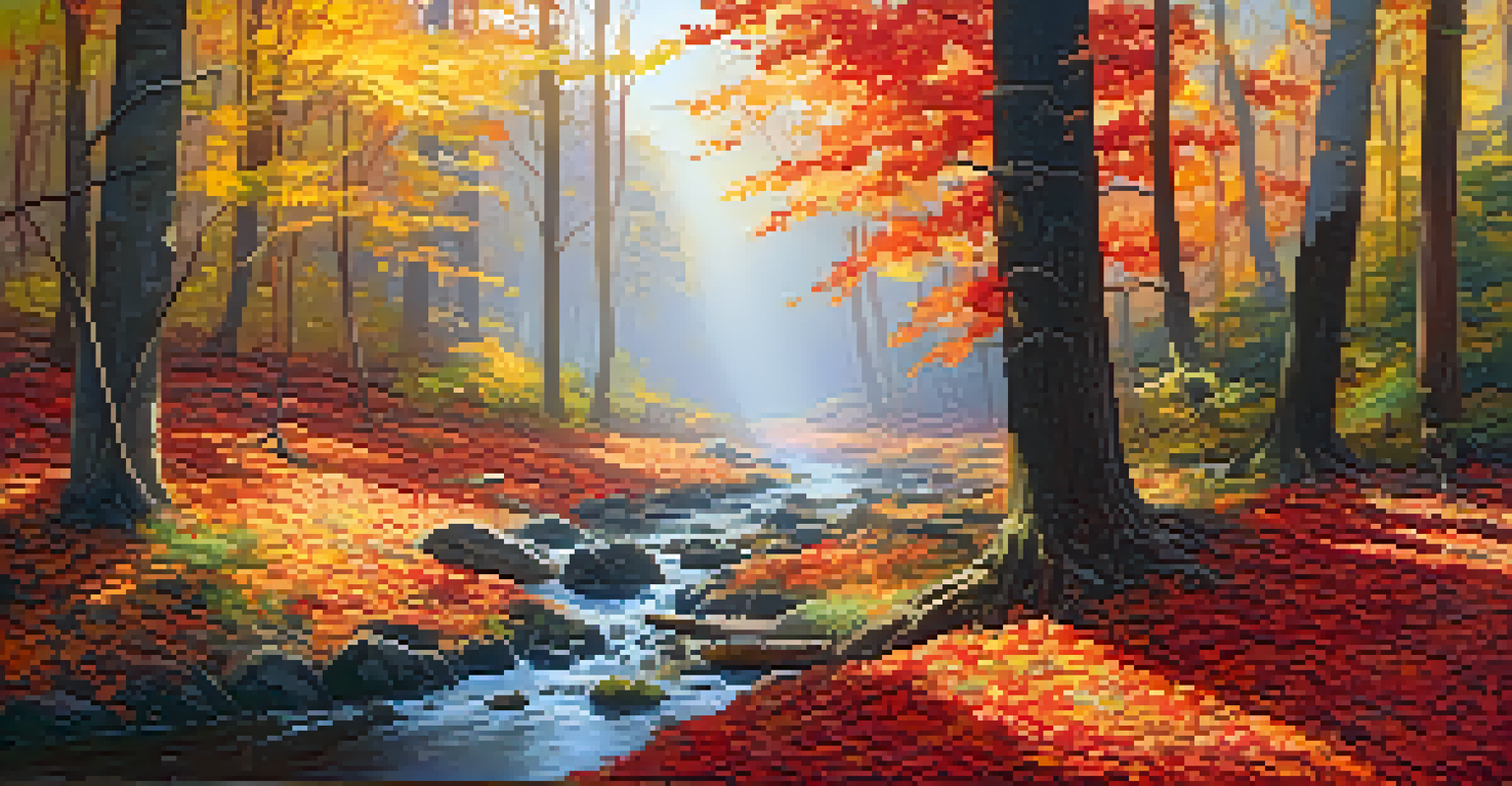Capturing Landscapes: Tips for Travel Photographers

Understanding the Golden Hour for Perfect Lighting
The golden hour, which occurs shortly after sunrise and before sunset, is a photographer's best friend. During this time, the sunlight casts a warm, soft glow that enhances the beauty of landscapes. It's the perfect opportunity to capture stunning photos without harsh shadows or bright highlights.
Photography is the story I fail to put into words.
Plan your shoots around these times, and arrive early to scout your location. This preparation allows you to find the best angles and compositions before the light changes. Remember, the golden hour lasts only a short while, so being ready can make all the difference in your shots.
As you shoot, experiment with different settings and compositions to take full advantage of the magical light. Don’t be afraid to take multiple shots from various perspectives; you never know which one will turn out to be your favorite.
Choosing the Right Location for Landscape Photography
Selecting the right location is crucial for capturing breathtaking landscapes. Research popular spots and lesser-known gems before your trip, as both can offer unique perspectives. Use travel blogs, photography forums, or social media to find inspiring places.

Consider the season and time of day when visiting specific locations. For instance, fall foliage can provide vibrant colors, while spring may offer lush greenery. Each season brings its own charm, so think about what you want to convey through your photography.
Master the Golden Hour
Photographers should plan their shoots around the golden hour for the best lighting conditions.
Don't forget to explore your surroundings once you arrive. Sometimes, the most extraordinary views are just a short hike or drive away from the main attractions. Embrace the adventure of discovery; it can lead to some of your best photographs.
Mastering Composition Techniques for Striking Images
Composition is the backbone of any great photograph, especially in landscape photography. A well-composed image can draw the viewer's eye and create a sense of depth. Familiarize yourself with rules like the Rule of Thirds, where you divide your frame into thirds, placing key elements along those lines.
The best thing about a picture is that it never changes, even when the people in it do.
Another technique to consider is leading lines, which guide the viewer's eye through the image. These could be roads, rivers, or even paths in the landscape. By incorporating leading lines, you can create a more immersive experience for your audience.
Finally, don’t forget to incorporate foreground elements to add depth to your photos. This could be anything from rocks or flowers to a person enjoying the view. These elements can help ground your image and make it more engaging.
Utilizing Filters for Enhanced Landscape Photography
Filters can be game-changers in landscape photography, helping you achieve professional-quality images. A polarizing filter, for example, reduces glare and enhances the colors in your shots, making skies bluer and foliage greener. This can add vibrancy to your photos that may not be possible through editing alone.
Another useful tool is a neutral density (ND) filter, which allows you to control exposure and capture long exposures even in bright conditions. This is perfect for creating smooth, dreamy waterfalls or soft clouds. Experimenting with ND filters can elevate your landscape shots to a new level.
Location Matters in Photography
Choosing the right location and exploring your surroundings can lead to stunning landscape shots.
Remember to check your composition after adding filters, as they can sometimes affect the overall look of your image. Take your time to adjust and ensure that your shot still conveys the beauty of the landscape.
Incorporating Weather Conditions into Your Shots
Weather can dramatically alter the mood and atmosphere of your landscape photographs. Embrace different conditions—rain, fog, or snow can add a unique element to your images. For example, fog can create a sense of mystery, while a vibrant sunset after a storm can lead to stunning color contrasts.
Always be prepared for changing weather patterns. Carry protective gear for your camera and yourself, allowing you to shoot comfortably in various conditions. This preparedness can enable you to capture those once-in-a-lifetime moments that others might miss.
Additionally, consider how the weather impacts your composition. Cloudy skies can serve as dramatic backdrops, while clear skies might make for a serene landscape. Adapt your shooting style based on what nature presents to you.
Editing Your Landscape Photos for a Professional Finish
Post-processing is an essential step in landscape photography, allowing you to enhance colors and correct exposure. Software like Adobe Lightroom or Photoshop can bring your images to life, helping you achieve the vision you had in mind while shooting. Taking the time to edit can significantly improve your final product.
Start with basic adjustments such as cropping, exposure, and contrast before diving into more advanced techniques like color grading. Experiment with different styles to find what resonates with your artistic vision. Remember, the goal is to enhance your photos, not to over-process them.
Editing Enhances Your Images
Post-processing is essential for refining landscape photos, allowing for color enhancement and exposure correction.
Lastly, don't hesitate to learn from others. Join online communities or take courses focused on photo editing. Sharing your work and seeking feedback can help you refine your skills and develop your unique style.
Staying Inspired: Finding Your Unique Voice in Photography
Inspiration can sometimes be elusive, but finding your unique voice in landscape photography is crucial. Look to other photographers, but remember to develop your own style by experimenting with different techniques and subjects. This exploration can help you discover what truly resonates with you.
Take the time to reflect on your experiences and the emotions you want to convey through your images. Whether it’s tranquility, adventure, or awe, your personal connection to the landscape will shine through in your work. This authenticity attracts viewers and helps you stand out in a sea of images.

Lastly, don't shy away from sharing your journey. Engage with fellow photographers on social media or participate in local photography groups. Building connections can spark new ideas and keep your passion for landscape photography alive.